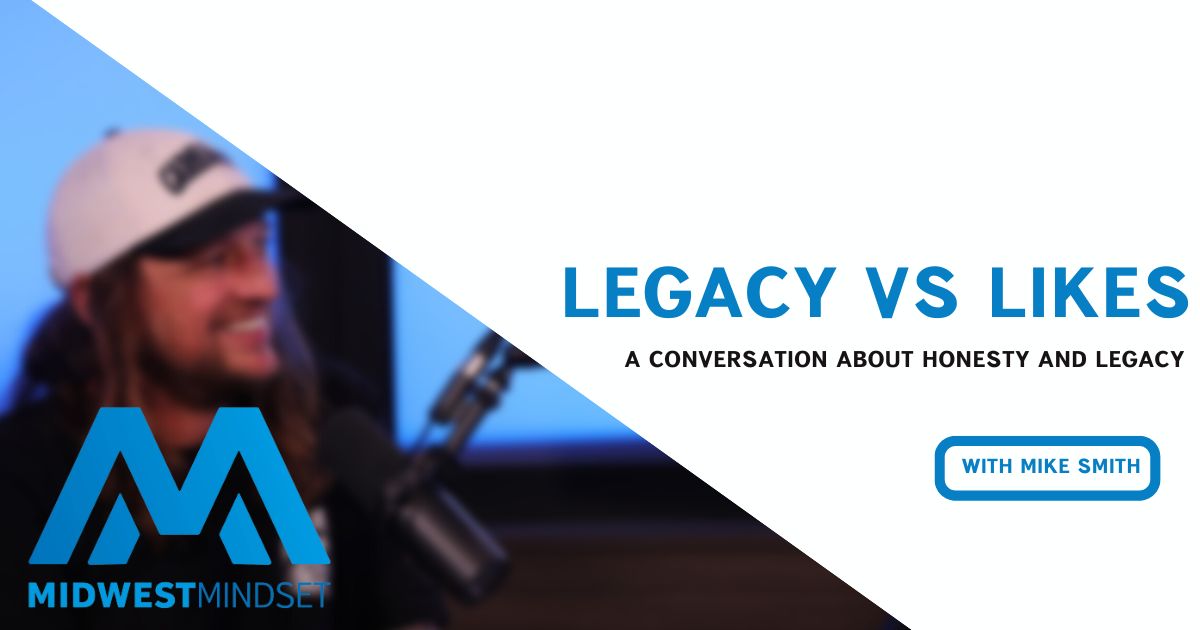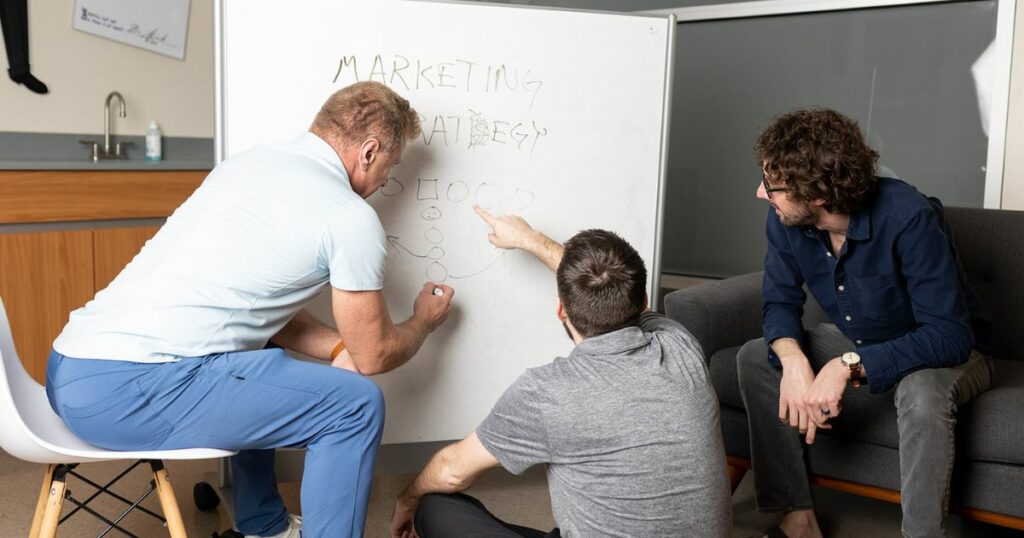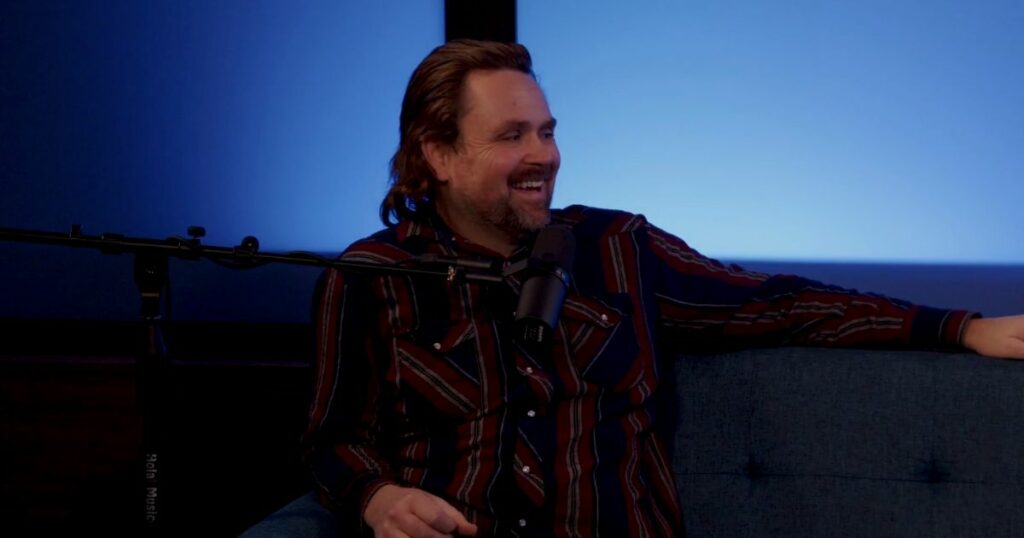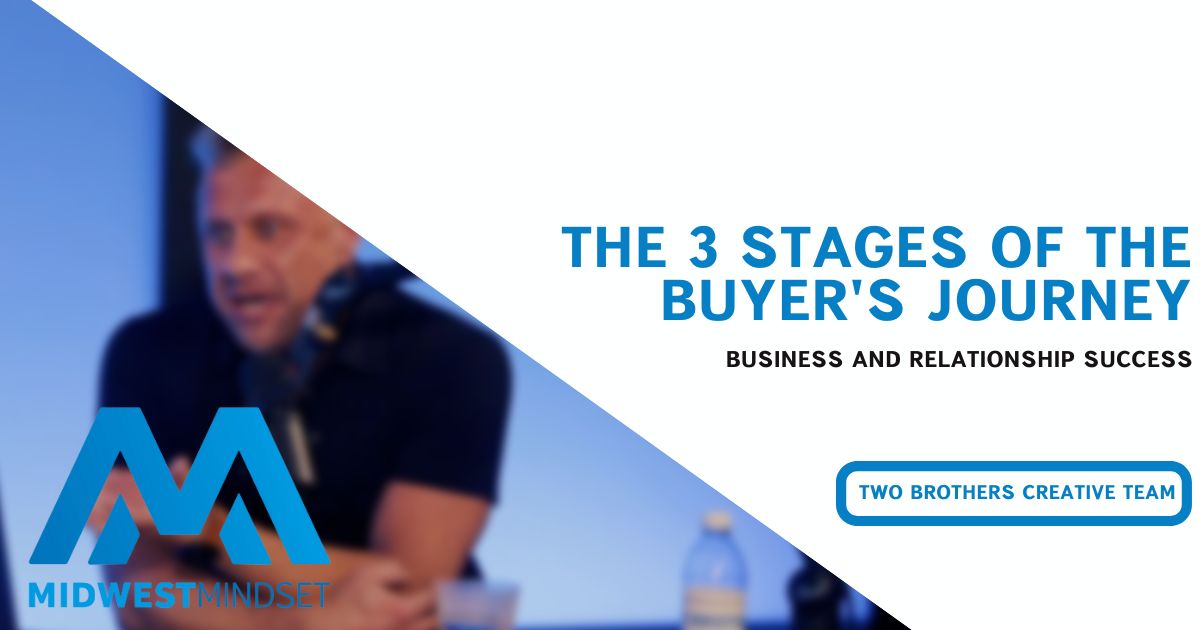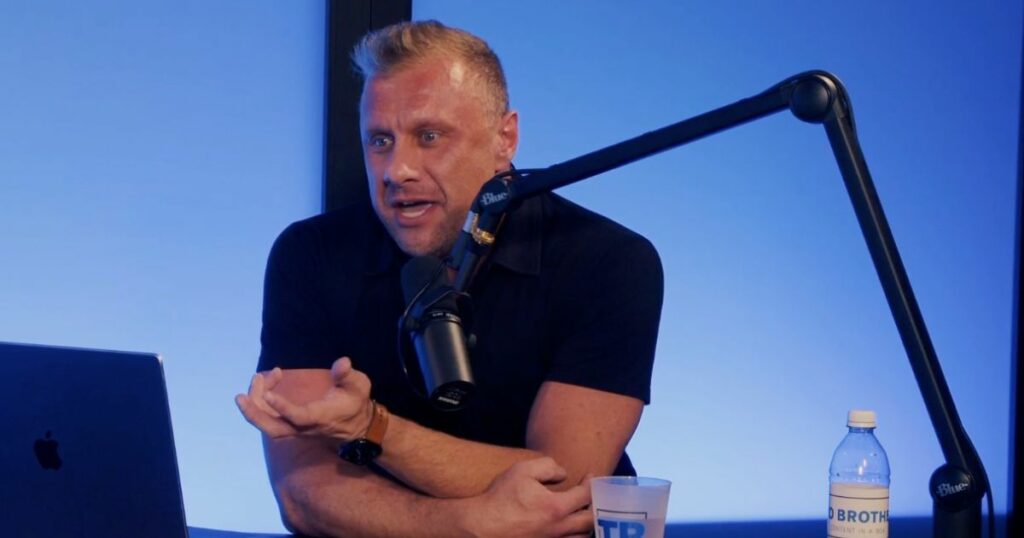Nebraska Tourisim: Too Cute for the Room or Effective Advertising
This is a written Transcription for the Midwest Mindset episode: Nebraska Tourisim: Too Cute for the Room of Effective Advertising

Full Written Transcript of The Episode
Nebraska Tourism Too Cute for the Room or Effective Advertising?
Matt: Nebraska. Nice. Honestly, it’s not for everyone. Just how many shitty slogans has this state come up with to try and bring tourists to our state? And have they even worked?
We’ve got national headlines for them, but in this episode of Midwest Mindset, we’re going to talk about the pros and cons of failing and winning if that’s something Nebraska is capable of doing anymore.
Was that too harsh? I feel like that was too harsh. I was trying hard. I feel like that was too harsh. Oh, this is what we’re doing. No. I’m sorry. I didn’t mean to dive in. I was like, wow.
Chad: We just went.
Matt: Full throttle leave. Uh, leave that in. Editor. That’ll be good. That little tail in there. Was that too harsh? All right. Hello and welcome back to Midwest Mindset, the podcast that makes marketing easy to understand and simple to do.
I’m your host with the most toast from neither coast who has an extra toe, which makes me extra good at swimming. And that’s pretty much it.
All right. Uh, now we have today sitting in here today instead of the other brother Ben. Uh, we’ll get to who this handsome devil is here in a second. Uh, we have our returning champion, Austin Anderson. He is bringing plaid back, whether you like it or not. He’s like 90s fashion. He’s just here, and he’s not going anywhere.
Austin: Dude, I you know, I just like the. I like how Wrangler shirts are long. They don’t come untucked.
Matt: So you’re a wrangler man then, huh? Yeah. You’re a wrangler. Shirts and jeans.
Austin: No, not jeans. Okay, I do have one pair, but those were just, well, broken in from woe will style.
Matt: Those are. Those are bro broken in. Those are bro.
Austin: Broke. So bro broke. Those are comfy. But I’m not breaking them in my own pair of wranglers. Man I don’t got the time for that. You have somebody.
Matt: Else break them in.
Austin: Yeah. No I got an interesting.
Matt: Okay. You got it. Yeah. All right. Uh, once again, being silenced in the control booth is our producer, Martin McHugh. We intentionally do not put a microphone in front of him because he says very inappropriate things on a regular basis. It’s become an issue with air, and it’s just I’m not really willing to pay for the fines.
So I don’t even know if YouTube issues fines or not, but if they. It’s just an excuse, really. We don’t want to hear Martin. Sorry, bro. Man, that was a harsh too. I’m just like I’m just dishing out the harshness today. Wow. Scorched earth Omaha I am, I am so guest. Hey, guess who’s next then?
I guess in the guillotine. Uh, here is, uh, the one and only leave. Yeah. He’s gonna walk. I’ll see you later. What happened here? Sitting in for, uh, Ben Tompkins? Uh, who’s busy in the other room working, whatever that is.
I don’t even know what that means. Um, is Chadwick Dodd otherwise known as Chad Dodd or Chad the Bot. Dodd, as we like to call him. Oh, gosh. No. Yes. Yeah. You know, you keep walking around bragging about losing all this weight and looking good and stuff, and you’re going to get that title. This is what happens.
Chad: I have nothing to say about this.
Matt: Yeah. Uh, Chad is, uh, Chad not only has an awesome name. Chadwick, uh, which I think you should fully embrace. I’m embracing Matthew. I’m embracing Matthew for a change.
Chad: Uh, that’s my middle name. Is it? Yeah. Wow.
Matt: Oh, now the connection makes sense. Yeah. It all comes. Yes. Yeah. So Chadwick is the founder and owner of clink. I think he said that. Clink claw. Oh. Claw Inc?
Yes. Claw no claw Inc with a k. Uh, we partner with Chad for all of our website builds at Two Brothers Creative Design. He’s a marketing guru, branding expert.
Uh, and he’s got his hands in, like, 20 different companies. Now he’s just found. He’s just, uh. What is it? What is it? What do they call that, a serial killer entrepreneur. A serial entrepreneur?
Yes. That’s what it is. My bad. I see I’m getting all mixed. See, the thing is, it a little inside baseball, behind the scenes? So, like, I am, I am, I’m stopping vaping and. And so now I’ve made the switch to no nicotine. And so now I’m on like the Nicorette, which I guess still has nicotine in it, but I don’t know how. So this is.
Chad: What we get is the.
Matt: Hyper. You’re gonna get basically bipolar Matt for a while. All right. Worse than normal because I am bipolar. So you’re going to get like, it’s like an accelerant added to this equation.
Austin: In and out of those nicotine withdrawals.
Chad: It’s more like a dumpster fire. Yeah. No, you shut up.
Austin: I just cut back to you. Just chewing on a bunch of. Yeah.
Matt: Um, so. But it’s all for good things, so I, you know, don’t die sooner, right?
Yeah, yeah. So, uh, welcome to the show, Chad. It’s good to have you here. We’re talking about branding, and we’re talking about slogans and marketing today with Nebraska tourism.
Uh, the brutally honest and, I don’t know, some would say brilliantly genius.
I don’t know if I agree with that at all, because I don’t, uh, but you were a guy. You’ve taken a lot of clients through this journey, through this path. And, uh, let’s start because they’ve had what?
Nebraska. Nice. We’re nice.
Which, by the way, our parody of that commercial still gets shows up number one and gets more views than the actual ad. Yeah. That’s fantastic.
We did a parody of it. And I think people, because we pulled like very similar photos and clips, it looks like the real thing. And um, and I think people probably think that’s the actual tourism commercial when they. Oh, that’s right, look at it, which is awesome.
Austin: Let’s go ahead and, uh, show that video. Yeah.
Matt: So let’s play it. Cue it up. Well, you didn’t have it ready. See, this is why Mierden doesn’t get a microphone you didn’t have fucking ready.
Chad: You know, I did.
Austin: That for me because I’m gonna edit that in.
Matt: Yeah. No, we’ll we’ll put that in there. Yeah. That’s a note for Austin who’s also editing.
Chad: Yeah.
Austin: So I’m just giving myself cues.
Chad: Right. Uh.
Matt: Punch in a.
Chad: Funnier joke there for me. Cut this out.
Matt: Accentuate my thighs. Yeah. Um, so they have had what? Nebraska. Nebraska. Nice. Was one. Yeah. They had, um, what was it then? The recent one was, um, honestly, it’s not for everyone. That’s the one that made.
Chad: National headlines the.
Austin: Colorado agency like.
Matt: 50 grand to do or something crazy.
Austin: They didn’t even pick anyone from here. Yeah, and Colorado’s like, it’s not for everyone. Yeah, like, of course they’re gonna say that.
Chad: I mean, football.
Matt: I wish I could have been in the meeting because I want to hear all the other ideas that they tossed out, like, you know, Nebraska. Fuck it. You know, like, here’s an interesting fact for you, though. And then, Chad, I want to hear your thoughts on, like, where they went wrong because this is your like, wheelhouse. Right? Um, more people drive through the state of Nebraska going to play like, touring, you know, than any other state. And yet we can’t get people to take a right or a left turn and stay, you know, I mean, we’ve got Stonehenge or Carhenge Carhenge.
Chad: We have Stonehenge.
Matt: We don’t have Stonehenge.
Chad: Falls.
Matt: Every time. Maybe that’s our problem. We should just start advertising things that aren’t here. Like, yeah, the Mona Lisa.
Austin: Buffet’s got the money. Bring us the Stonehenge.
Matt: Um, but, you know, we’ve got carhenge, which is just like ghetto Stonehenge, which I don’t even know why we want to even, like, have that. Uh, we’ve got the the chimney Rock state capital, Pete Ricketts and many other things that resemble a penis. So we’ve got things to come see here in the state, is what I’m saying.
Um, but we can’t seem to get people here. And it made national headlines, but I don’t from what I saw online, like, it didn’t really increase tourism. It didn’t actually get the job done. So we were I don’t know if people were laughing with us or at us in that situation that.
Chad: That I don’t know.
Austin: I don’t think that how are you going to convince people to vacation here? You know, they get one vacation, they got to spend a bunch of money. Like, why, you know, they want to go somewhere that’s like exotic.
Chad: It’s like like.
Austin: They’re not going to post Instagram photos where.
Chad: They were.
Matt: The dollar store of vacations. You know, it’s like we’re cheap. We’re cheap. Uh, but, Chad, let’s start like, where should somebody start with an actual slogan to actually accomplish an end goal, whether it’s a state or a business?
Chad: Oh, it’s like really? Where do you want to start?
Matt: Yeah, where do we start? Because I feel like they I don’t know where they started. I don’t know how they got to this.
Chad: This comes down to who who you really are.
Rather like we’re looking at the state or whether we’re looking at, you know, a company like really who who you are and embrace who you are. Um,
I don’t think Nebraska embraced who they are, you know, and, and with the nice slogan is like the way I took it from being a coast boy. Is Nebraska nice or, like, nice? Like, it’s just.
Matt: Like the O in there.
Chad: Like it’s just like nice. Like, is it a nice place? Is it a nice place to drive through? Like, there’s nothing there to it. And if it’s not for everybody, that same slogan.
Well then who is it for? Like they’re not defining who we are as a state. And I think that’s where they kind of screwed up.
Austin: Almost too simplistic.
Matt: Yeah. Well, and there wasn’t a lot of meaning or substance behind it, like you said. What does that mean? Like the people are nice because I know a lot of people here. They’re not nice. Um, so driving nice. No. Drive traffic. Nice. No. Um, but you’re right, I think, like, that’s a mistake a lot of businesses make, uh, you know, steering this back to, like, what, a small business can do or something like this is, like, you don’t know who you really are or who you’re really speaking to. And I don’t know that they went through that process. I think this is a.
Chad: Who are they? Who are they attracting? Yeah. Like, are they attracting people from Kansas? Iowa? I mean, if it’s nice and they’re attracting people from Iowa, then of course, like we’re, we’re we’re better.
Matt: We’re better than, we’re better than Kansas.
Austin: Yeah. We are.
Chad: Better. But like, who are they. You’re not going to get somebody from Florida. You’re not going to get somebody from Boston. You’re not going to get some from somebody from California. So who are you really attracting into India’s? Like, are you trying to build your own tourism inside of the state, like.
Matt: And like building out a persona, like you can build out a persona for literally anything and you should. It’s a great exercise. I mean, whether it’s like, hey, we’re going to attend this conference, we’re going to build out a persona for the people attending this conference. We’re going to build out a persona for this specific sale or this campaign or or for your business overall. Right? I mean, I think that’s a that’s a common misstep is we don’t know who we’re actually trying to attract or who are we targeting, who are we trying to reach, and then we don’t lean into who we are. And this is a marketing mistake. I would say it’s like a marketing one on one mistake where we try and get too cute for the room, we’re too cool for the room where it’s like, yeah, okay. Yeah. It’s not. Honestly, it’s not for everyone. Ah ha ha. That’s a funny joke. It’s going to get national headlines, but is it going to move the needle? Is it going to be able to laugh and then say, you know what. But it is for me. No, I don’t think I mean the statistics. I don’t think so.
Austin: Why would why would anyone not for me like, why would anybody go, ooh, I’m gonna go check that out. Yes. I don’t see.
Matt: Something nobody else likes. Maybe I will like it.
Austin: Right. Or maybe they were trying to get the people that are, like, want to be different than everyone else.
Matt: But who are they? Like, are they going on vacations? Weirdos.
Austin: Those are like school shooters.
Matt: Yeah, I feel like those like they’re going to the theaters in Colorado and doing horrible things. Or they’re I mean, it’s like, I don’t know, I don’t see the connection. You gotta keep up with it. Chatter podcast has gotten weird since you last were on okay.
Chad: Like, here we go.
Matt: Uh, it’s new formats, a whole new life. Um, so. But, Chad, like, walk us through the process. As though it’s like you’re trying to come up like a slogan, like, do you even need a slogan? I mean, let’s start there. No.
Chad: Yeah. Like, no. I think we’re looking at like, marketing campaigns or advertising campaigns or brand statements or whatever it is, like you’re trying to figure out, like how you’re going to communicate to somebody.
And a lot of times it’s just say what you mean and you don’t have to overcomplicate it, you know?
And so that’s where I think people try to be cute and clever and, you know, it falls flat. If you go too cute or too clever, you’re going to alienate people. It’s going to be confusing to people. Um, and too, you could offend some people as well. Like, I mean, there’s other campaigns where it’s like, okay, that’s kind of offensive.
And it wasn’t meant to be, but it was just a simple like, you’re trying to be too clever with something, and in that you’ve lost the audience. Yeah. And so just say it like it is, you know, and if it takes you like, if it takes you just a little bit to say something, you know, and just say like Nebraska. Nice.
Like, that’s too small. Like what is nice. You’re not clarifying it. You’re not simplifying it for somebody. You simplified it too much. And in the simplification you confused it. So simple simplicity isn’t like in length. It’s in clarity of what you’re saying. Like be precise in what you’re saying and.
Matt: Also understand like what are the words actually mean?
Because nice. Let’s be honest. Like, I mean if you were to describe like yeah, like, okay, this is, this is, this is not like PC, but this is the this is the real life. All right? So is this real life.
Yes. You have a group of girls or guys and they have that friend and they’re trying to hook their friend up and you’re like, oh, you’re single now. And like, oh, you need to get with Chad. He’s so nice. I’m sorry, Chad, that I didn’t.
Austin: Yeah, no, it’s a stereo.
Matt: Thinking of a different.
Chad: Chad that really cut deep. No.
Matt: Or Brenda. Oh, she’s so nice. And it doesn’t mean they don’t. It’s they it’s like a it’s a.
Austin: Way of getting out. Yeah. Of, like hooking up with that person. Yeah. It’s like a stereotypical thing. Yeah. From decades and decades of, like, no one wanted to be voted like, the nicest in their class.
Yeah. No. Yeah. You know, I’ve even seen that in TV shows and sitcoms and Goldbergs, there’s a whole episode about it. He, like, he gets voted like the nicest, and he’s like, no one wants to be nice. No one is nice. You know? It’s like, what is that?
Matt: Well, yeah. Like, because you never want to be the nice friend because then you’re in the friend zone. And trust me, I’ve spent my life in the friend zone.
That’s where I’ve resided. I have built my camp there, and it’s like the nice. It’s like. It means it translates to like, uh, I don’t know, like all the things we say we want, but we don’t actually want. That’s what it translates to. Like, oh, he’s nice or he’s he listens, he’s friendly, he’s supportive, he’s loving, he’s caring.
Are you going to date him? No. Nope, nope I’m going to go date. The guy’s a piece of shit who you know, doesn’t live with his parents. And he’s 35 and he’s got, uh, you know, uh, uh, what do we call it in that previous episode, the, uh, the Al Capone syphilis. Oh, yeah.
Austin: Yeah, he’s got the syphilis syndrome. You missed.
Matt: That one. The Al Capone syphilis syndrome. But, yeah, go back and watch links in the show notes. It’ll make more.
Chad: Sense. Nice is safe. Like when you. When you want a vacation.
Do you want safe? Like adventure. Like you want adventure. You want something that’s out of your norm. Your normal life is safe, right? You wake up, you go to work, you go home, you make dinner, you maybe go to the movies. It’s all consistency. It’s just safe. And then when you go on vacation, you want to go clubbing. You want to go to the beach.
You want to do, you know, the adventurous things. You want to go mountain climbing, like whatever it may be. And Nebraska is nice, is just we’re safe.
Matt: It’s like an average. It’s like it’s equates to boring. Yes it does. And I feel like that, that that one was a swing and a miss. And then honestly, it’s not for everyone. I think the big miss there is it’s like they’re trying to be too cool for the room, trying to be too clever.
And like, I think, Chad, tell me what you think about this. Because marketing, I think this is one of the biggest and easiest mistakes to make is where we try and get too creative and we only focus on creative and we don’t focus on the formula. And I’ve always believed it’s like formula.
First, there is a rhyme and reason to what works, why it works. Psychology. You’re not reinventing the wheel in a lot of things, just somatically. Um, and then you incorporate your creative into that.
And I think we sometimes think, oh, I’m just going to come up with a great catchphrase or a goofy lizard mascot and, uh, you know, I’m gonna he’s gonna be a hand puppet. It’s gonna be hilarious, but. Well, is it actually fitting into the formula of resonating with your ideal customer?
And is it reflective of you? Is it just there’s so many different things you can just skip over, gloss over, and yeah, you’ve got something that’s funny and entertaining, but like, is it going to, you know, unless it’s a Super Bowl ad where you got hundreds of millions of people watching, is it really going to connect or resonate deeply with anybody?
Chad: Well, even when you watch the Super Bowl ad, you see so many ads that try to be funny and they fall flat, right? Yeah. Oh yeah. And there’s only a few that really do a great job at it, you know, over time. But they’ve perfected it over the years of falling flat on their face with it.
But when you’re looking at like when you’re looking at coming up with a. Campaign or something that is quote unquote clever is be true again, be true to who you are as a as an organization and then present that to the people you know, you don’t want to sit there and like like I’m kind of just I am safe, right?
Like I am like that guy who like, I like simplicity. I don’t, you know, my place is clean, OCD, like, that’s who I am. And so when somebody approaches us as an agency, they’re looking for, you know, like things to be in order. They’re looking for structure. They’re looking for clarity and simplicity. And that’s what we’re attracting because that’s who who we are. I’m not trying to be another agency that’s, you know, flamboyant with things and go over the top.
Chad: I’m being true to who I am. And those people are then coming to me. And so I think that’s the key is just be you. And we’re so quick to wanting to get like a lot of like followers.
We’re so quick to want to have, you know, big numbers. But we’re not thinking like long game of it, you know, and, and how are we really building an actual following of people who want to be part of us? And so you get skewed numbers over the time too, right? Like if you’re not being you and you like just following a trend, you’ll get a huge number and then it will drop off and you’re not sure like who your followers are anymore.
And then leadership is like, what the hell’s going on here? This isn’t right. And then you’re then the next thing is like, we have to now chase the next campaign or the next trend. And so you’re always a trend chaser, not a trend setter. Yeah. And you look at big organizations, they’re setting the trend. They’re not following the trend.
Matt: It’s easy to make pivots based on false information. When I say false I mean like information that you don’t it isn’t accurate. You don’t have a big enough sample pool like and this is a mistake. I mean, we I’ve made this mistake in the past. I think probably most, if not all business owners, when they start off make the mistake of just I just need a logo, I’m going to get somebody from uh, like what was what’s the what’s the Fiverr?
Fiverr. Yeah. 99 design. I’m gonna get somebody for Fiverr to do it for five bucks and throw it up there. It doesn’t matter. And then you don’t really know the resounding impact things like that have on the long terme play for, in this case, the state of Nebraska.
Because now you’ve made the state of Nebraska a the butt of the joke.
And how long is that going to last? Can that even be reversed? So then when you put out your next thing where you try and make your next slogan, your next pivot, your next, uh, you know, present yourself to the, the, the country for travel and tourism. They’re going to think, oh yeah, they’re the joke.
Chad: So but why do we get away from the Arbor Day thing?
Austin: I don’t know, what was the Arbor Day like?
Chad: We were we’re home of Arbor Day. Yeah. So why did we get away from like that was our that was on all the the signs coming in when I first moved here that was the big thing. So we would.
Austin: Probably have more people because people really care about trees now.
Chad: Yeah, that was my pitch.
Matt: I sent that in to the state secretary of state. Say, here’s my slogan. Trees, trees. It’s it’s simple. It’s simple. It’s one word just like nice, you know?
Austin: And people would be like, man, we gotta check out I love trees.
Matt: But that’s the thing. Like, that’s embracing us. Because, like, when I tell people about coming here, you know, we don’t have mountains, we don’t have oceans. It is beautiful here, though. Like in the summertime, in the fall. I think it’s one of the most beautiful places in the country.
Austin: The whole state to.
Matt: The whole is covered in trees. You have trees everywhere. And Chadron, you know, it’s that Ogallala Aquifer fueling those trees.
Austin: Long Pine Bassett, great territory.
Matt: Yeah.
Austin: Well, I’ve been everywhere. Okay.
Matt: Yeah, well, he wears plaid. Chad.
Chad: No.
Matt: That’s true. Wow. Plaid Chad and even.
Chad: Oh, Lord. Wow.
Matt: We just got a new, new nickname.
Chad: Well, plaid Chad Thibodaux. We’re moving on from that quick.
Matt: Okay. Wow. That’s gonna stick.
Chad: Nebraska has a lot of different, like, landscapes in one state where you don’t get that, like, yeah, where I’m from in Massachusetts, it’s mountains, it’s trees, it’s lakes and rivers and like, but it’s the same landscape. When you come here, you have the plains. Then you have to go further out west. You have gone into this unique mountain forms, you know, shapes. You go to Valentine, Nebraska. That’s a different look. And so it’s a unique thing. So why aren’t we playing on. Mhm. You get all the states in one.
Matt: Or just embrace like Husker football. There’s so many things that are like the identity of the state that we try and like steer away from. Like you don’t have to say obviously you can’t do Husker football because they would trademark and bill the state, you know, millions of dollars for that.
But embracing the color red like it’s a red state. It’s a conservative state for the most part. It’s a Cornhusker state. I mean, like our blood is red. I mean, there’s a lot of red people eat is red state.
Yes, exactly. So, um, so to button up this conversation about branding, coming up with a slogan like, um, what? Like if we had to break this down in like, three simple steps.
Steps, you know, and you can correct me if I’m wrong and toss in your thoughts here, guys, but, like, know who you are, what is your identity and embrace it. You know, even as weird and awkward and scary as that is, embrace it. Know who it is you’re speaking to. You know who is your ideal customer. Build out a persona, know exactly who you’re speaking to so you can actually connect with and resonate deeply with them. What else would you throw in?
Chad: I would throw in there the why? Like why would somebody want to be here? So you have the who I am. Why am I doing this and who am I talking to? Like, I think that’s a key thing because if you don’t have the why, like.
Matt: Yeah, if you don’t have the why, you don’t have the what if you don’t have the what, you don’t have the how. If you don’t have the how, you don’t have the where. If you don’t have the where, you don’t have the why. And that brings us back to today’s.
Austin: Who’s on First.
Matt: Episode. The letter y. All right. Chadwick. Thank you so much for popping on the show. If you need help with your branding, if you need help with your marketing, if you need help with your graphic design, your website builds. Uh, we’re just going to refer you to Chad, because that’s who we go to, because he’s actually the secret behind everything we do now. Uh, but we do partner with him because he’s a phenomenal. Uh klaa. Inc.com. Check out his brand new website. Oh, my God, let’s give a big round of applause to the brand new website.
This guy has been just working on this thing for, uh, years, and, uh, it turned out phenomenal. Check it out. Clarin.com. The link is in the show notes. You’re just one finger away.
Finger that thing and the notes I really need to work on how I’m, uh, I need to do. I need to contract that company out of Denver to come up with a new out, a new out drill.
So. Okay, uh, you can use your finger to push on the thing in the show notes. Takes you to his website. You don’t have to use your finger. You can really use any body part you want. This is really spiraling.
Austin: Unless. It’s unless it’s, uh, got a deep callus. Um, I don’t think.
Matt: Or if it’s a crevice, it probably wouldn’t work. It’d be as effective in protecting my things.
Austin: All right.
Matt: Uh, that is how you sell your services there, Chad. Thanks. Uh, but all joking aside, uh, check it out. Link is in the show notes. Uh, the content box.com.
That link is in the show notes as well. For everyone here, except for Martin, who, you know, once again, he didn’t chime in with a single funny, uh, you know, anecdote, thought question. And yes, he doesn’t have a microphone, but still, that’s no excuse.
Austin: You could have you could have yelled.
Matt: He could use sign language. Yes. So Martin is still in the bullpen, and we’re going to keep him there until he’s been picking on Martin. See, the lack of the the nicotine gum is wearing off. It’s wearing off now. Docex. Yes. I’m in. I think that’s what I said.
I don’t know, my Lasik is starting to wear off. All right. Well, thank you so much for joining us here on this episode of Midwest Mindset. We’ll see you next time.
